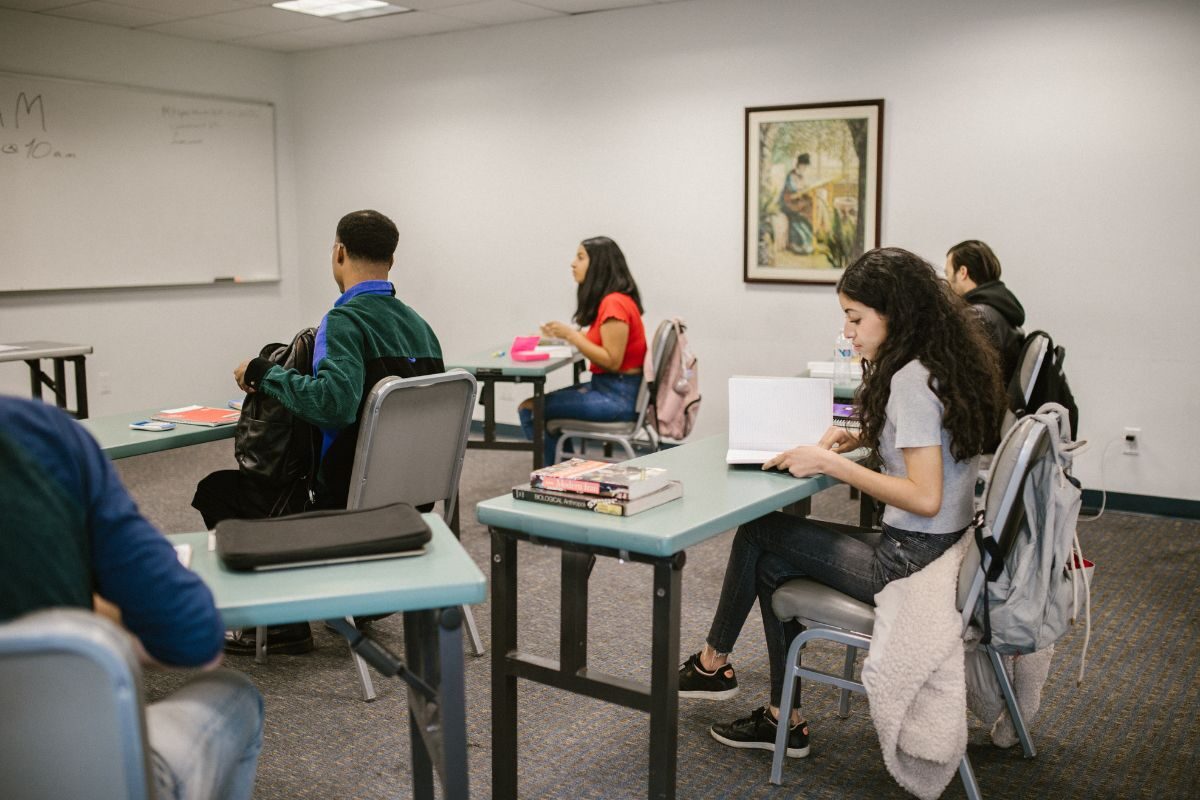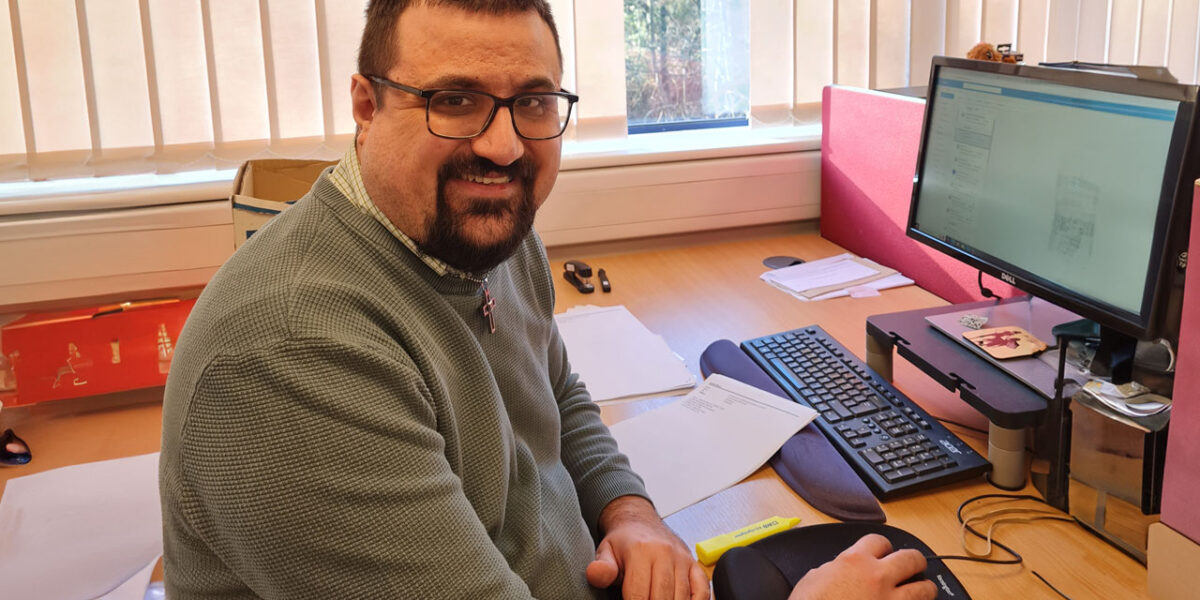PAC warns on ‘lost decade’ in education for disadvantaged children

- Prospects for a generation of children could be damaged without faster action from Government
- One in eight schools did not take up National Tutoring Programme recovery scheme in 2021/22
- Pupil absence higher than pre-pandemic, particularly among disadvantaged pupils
In a report today the Public Accounts Committee expresses alarm that it may take a decade for the gap in attainment between disadvantaged pupils and others to return to pre-pandemic levels.
Years of progress since 2012 to narrow the attainment gap between disadvantaged pupils and others had been reversed by 2022, according to Key Stage test results, and Government expects it may take another ten years to return this gap to the level at which it was before the pandemic.
A key plank of the Government’s education recovery programme, the National Tutoring Programme, was not taken up by 13% of schools in England, with pupils at these schools missing out on the benefits of subsidised tutoring. Government must do more to understand and improve these disappointing results, with the Committee further warning that schools may not be able to afford to provide tutoring once DfE reduces its subsidy rates.
The Committee calls on DfE to take targeted action to reduce absence rates among disadvantaged pupils in addition to ongoing work to improve attendance. Absence across the board is higher than before the pandemic, but also remain highest for disadvantaged pupils.
After multiple delays and much pushing, DfE’s special educational needs and disabilities (SEND) improvement plan has been published – but the timetable stretches beyond 2025 while the children affected continue to make their way through the school system. The Committee expects DfE to get on with the necessary improvements as quickly as possible, making clear the respective responsibilities and accountabilities of the education and health systems.
Dame Meg Hillier MP, Chair of the Committee, said:
“The DfE does not seem to appreciate the pressures schools are under as they seek to help pupils catch up amid funding constraints, challenges in recruitment and retention for staff and growing mental health needs for pupils. It is therefore essential that Government reckons with the reality of the situation and publishes focused plans on reducing the disadvantage gap and absence rates. It must also bolster uptake of tuition, an essential programme at risk of withering on the vine as subsidies are sharply reduced.
“The consequences of a lost decade in progress narrowing the gap in attainment for disadvantaged children are immeasurable. Without swift action, the slow-motion catastrophe of the pandemic for children’s education, and in particular for disadvantaged children, will continue to have far-reaching consequences for an entire generation.”
PAC report conclusions and recommendations
It is alarming that it may take a decade for the gap in attainment between disadvantaged pupils and others to return to what it was before the COVID-19 pandemic.
Disadvantaged pupils have, on average, lower attainment than other pupils, and results from the Key Stage 1, 2 and 4 tests taken in 2022 showed that this disadvantage gap had grown since the start of the pandemic. For example, the disadvantage gap index (a measure of the difference in attainment) at the end of primary school was 3.23 in 2022, compared with 2.90 in 2018, reversing the progress that had been made to narrow the gap since 2012. The Department says that every element of its recovery programme has been tilted towards disadvantage, it believes it has a strong package of measures in place and it hopes to see the disadvantage gap narrowing again from summer 2023. However, it still expects it may take 10 years to return the disadvantage gap to the level it was before the pandemic.
Recommendation 1: The Department should publish a plan setting out how, building on good practice, it will reduce the disadvantage gap as quickly as possible, and the expected trajectory.
Effective recovery relies on pupils being at school but absence is higher than it was before the COVID-19 pandemic, particularly among disadvantaged pupils.
In the autumn and spring terms of 2021/22, the average absence rate for all pupils was 7.4%, compared with 4.5% for the same terms before the pandemic in 2018/19. For disadvantaged pupils, the rate was 10.4% in 2021/22, compared with 7.2% in 2018/19. The Department says that attendance rates are improving as levels of illness reduce. It is trying to tackle pupil absence in several ways, with leadership being provided by the Attendance Action Alliance which brings together stakeholders from across the school system. The Department believes it has set strong expectations and made clear that responsibility for attendance is shared between parents, schools and local authorities. It is collecting better data, drawn directly from schools’ own systems, which it can look at in detail in real time. It also provides data back to schools to allow them to benchmark themselves against other schools.
Recommendation 2: The Department should develop a better understanding of why disadvantaged pupils have higher rates of absence than others and, in addition to its ongoing work on attendance, take targeted action to reduce absence rates among disadvantaged pupils.
We share the Department’s disappointment that 13% of schools did not take up the National Tutoring Programme in 2021/22, meaning pupils at these schools missed out on the benefits of subsidised tutoring.
Take-up of the two centrally run National Tutoring Programme schemes was below the Department’s expectations, but the introduction of a school-led tutoring element gave schools more control and significantly boosted take-up. In 2021/22, 87% of schools in England participated in some form of tutoring under the National Tutoring Programme, but the Department described the fact that 13% of schools had not taken part as the “biggest disappointment” of the recovery programme. The Department says it has put a good deal of resource into persuading schools of the benefits of the National Tutoring Programme. The Department added that there was continuing evaluation of the National Tutoring Programme to ensure tutoring was delivering the best value for money, and that it had committed to investigate how it could further develop longitudinal studies.
Recommendation 3: The Department needs to do more to understand why some schools are not taking part in the National Tutoring Programme and take more effective action to increase participation, informed by evaluation of the first two years of the scheme.
We are not confident that schools will be able to afford to provide tutoring on the scale required to support all the pupils who need it once the Department withdraws its subsidy.
By the end of 2021/22, pupils had started 2.5 million courses under the National Tutoring Programme. The Department made available funding of £594 million to subsidise the cost of tutoring in that period. But it is reducing its subsidy for tutoring under the National Tutoring Programme each year, with the result that the rate of subsidy will drop from 75% in 2020/21 to 25% in 2023/24. After that, schools will have to cover the full cost of tutoring from other sources, such as pupil premium funding. School budgets are already under significant pressure. Written evidence submitted to us shows that some schools are struggling to fund the cost of tutoring in 2022/23, when the Department is still providing a 60% subsidy. The Department wants tutoring to become an integral part of the school system, but it is clear that without extra funding schools will find it difficult to maintain tutoring on a comparable scale to that currently being provided. The Department has committed to model the impact of removing the subsidy on the affordability of tutoring for schools.
Recommendation 4: The Department should monitor how much tutoring is being provided, in 2022/23 and 2023/24 when it is providing a subsidy, and in subsequent years, and intervene if tutoring levels drop significantly.
Full inquiry info including evidence received can be found here – Education Recovery in Schools – Committees
A Department for Education spokesperson said:
“We are conscious of the effect the pandemic has had on pupils’ education which is why we have made £5 billion available for education recovery.
“Despite the effect of the pandemic, England came fourth out of 43 countries that tested children of the same age in the PIRLS international survey of the reading ability of 9 and 10 year olds.
“We remain committed to addressing the attainment gap which is why the National Tutoring Programme is targeted at the most disadvantaged students and has had over three million course starts to date, backed by more than £1 billion investment.”
Background information on catch up support:
- We have increased pupil premium funding to almost £2.9 billion in 2023-24, meaning this funding is at its highest ever level.
- Over three million courses have been started through the National Tutoring Programme to date, and 90,000 children across two-thirds of primary schools are also benefiting from the Nuffield Early Language Intervention (NELI) programme.
- To support schools to continue to offer tutoring to pupils, we recently announced plans to raise the subsidy rate for the National Tutoring Programme to 50% in 2023-24. The announcement also noted a renewed focus on prioritising disadvantaged pupils: Government to match schools’ tutoring costs next year – GOV.UK (www.gov.uk)
- Over the next two years we will ensure that pupils continue to have access to high-quality tutoring, through the National Tutoring Programme and 16-19 Tuition Fund, as well as sustained recovery premium funding, which has almost doubled in secondary schools this year from £145 to £276 per eligible pupil and which will be targeted at supporting disadvantaged pupils.
- We are supporting the most disadvantaged and vulnerable pupils through pupil premium funding, which is increasing to more than £2.6 billion in 2022-23 and to almost £2.9 billion in 2023-24 – the highest cash terms rate since this funding began.
- Our ongoing investment in English and Maths curriculum hub programmes is also helping children to benefit from the best possible teaching in early reading and maths respectively, including through phonics and Teaching for Mastery interventions. On 17th April the Prime Minister and Secretary of State announced plans to further the work of Maths Hubs, including an ambition to reach a total of 75% of primary and 65% of secondary schools with mastery pedagogy by 2025.
Background information on attendance:
- We are working with schools, trusts, governing bodies and local authorities to identify pupils who are at risk of becoming – or who are – persistently absent to support.
- All children of compulsory school age, regardless of their circumstances, are entitled to a full-time education which is suitable to their age, ability, aptitude and any special educational needs they may have.
- We recently announced the expansion of the successful sector-led Attendance Hubs programme with nine new lead hub schools, alongside the expansion of Attendance Mentors in areas of the country with the highest levels of pupil absence.
- The nine new attendance hub leads will support up to 600 primary, secondary and alternative provision schools in England to improve their attendance by sharing effective practice and practical resources.
- The expansion of the attendance mentors programme, delivered by children’s charity Barnardo’s, will see trained mentors work directly with 1,665 persistently and severely absent children and their families across Knowsley, Doncaster, Stoke-on-Trent and Salford to understand and overcome the barriers to attendance and support them back into school.
Sector Response
Julie McCulloch, Director of Policy at the Association of School and College Leaders, said:
“As this report starkly shows, the Covid pandemic has taken a terrible toll on many young people and continues to do so – not only in terms of learning, but in growing mental health challenges and lower rates of attendance. It is disadvantaged pupils who have been hit the hardest as they faced the greatest barriers in accessing remote learning during the pandemic and are now worst affected by the cost-of-living crisis.
“The link between poverty and educational attainment is clear and long-standing. Even before the pandemic, the rate of progress in closing the disadvantage gap moved at a snail’s pace because of the lack of a concerted government strategy and investment. We are nowfurther away than ever from solving this problem.
“The committee’s assertion that the Department for Education does not appreciate the pressures facing schools is a damning indictment of the department’s failure to listen to the evidence that ASCL and a host of other organisations have repeatedly set out to ministers and officials in forensic detail. We fully support the committee’s recommendations that the department should set out a plan on how to reduce the disadvantage gap and absence rates, and that it should reconsider how the National Tutoring Programme can best support all pupils.
“It is essential that this is underpinned by improved funding to schools and colleges and action to address the worsening problem of teacher shortages.”
Paul Whiteman, general secretary for school leaders’ union NAHT, said:
“The combined pressures of Covid-19 and the cost-of-living crisis have had a serious impact on children from already disadvantaged backgrounds. Schools are offering all the help and support they can, but the truth is that the government has not passed on the funding and resources required to make a real difference.
“Tutoring is a good example of this – it’s a scheme that could really help, but schools have found themselves unable to take full advantage of it for their pupils because budgets are so tight, and they are rightly worried about what happens when the subsidy disappears. The Public Accounts Committee are correct when they say the government to not seem to fully grasp the severity of the situation in schools. That is why the profession is in dispute currently, to raise the alarm on their pupils’ behalf.
“The government has not done enough to mitigate the impact of the global events on vulnerable children over the past few years.”
Kevin Courtney, Joint General Secretary of the National Education Union, said:
“This new report spells out the worrying trends that schools have been seeing since the pandemic. The growing attainment gap with all its implications for children’s life chances can’t be allowed to continue and the Government must take immediate action.
‘The government is in denial both about the scale of the problems and the depth of change that our learners need. Disgracefully it ignored the report of Sir Kevan Collins, its own recovery Czar.
‘Governments response to education recovery has focussed on academic catch up. The provision offered through the National Tutoring Programme was never adequately and appropriately funded. It has so far provided less than a third of the money its own advisor called for and have provided little for the mental health and emotional impacts of the pandemic. The growing problem of attendance in part reflects the perception of many students that their needs are not being met by the current system.
‘The Government must ensure that funding for the NTP is adequate and long-term, invest in educators to stem the recruitment and retention crisis, and provide more support for mental health. It must address our out of date system of curriculum and assessment and move much more speedily to implement a well-founded plan for SEND and Alternative Provision”.
Dr Patrick Roach, General Secretary of the NASUWT-The Teachers’ Union, said:
“We warned that the Government’s catch up plans were wholly inadequate to deal with the profound challenges experienced by children and young people as a result of the pandemic.
“It is now abundantly clear that Government policy is failing to deliver for a generation of children and young people.
“The Government has failed to deliver the levels of investment, infrastructure and support that schools need to secure an effective post-pandemic education recovery.
“Schools and wider children’s services are continuing to endure real terms cuts at a time when the Government is presiding over real terms cuts to vital services.
“Whilst schools are trying their best, a lack of investment is also leading to teachers and headteachers leaving the profession prematurely due to unsustainable workload pressures.
“A fully-funded national recovery plan for children and young people must be a priority for any Government that cares about children’s futures.”
Natalie Perera, Chief Executive of the Education Policy Institute, said:
“As the Department for Education’s own data shows, the impact of the Covid-19 pandemic has erased ten years of progress in narrowing the disadvantage gap. It is clear that greater investment is needed to recover lost learning for the current generation of pupils. While the more visible impacts of the pandemic begin to fade, efforts to remedy lost learning remain as important as ever if policymakers remain serious about equalising opportunity.
“It’s also vital that efforts to recover pupils’ lost learning must be accompanied by an effective strategy to reverse growing levels of pupil absence. The Department’s most recent absence data reveals that the share of pupils persistently absent from education is at its highest since 2006, equating to over 1.7 million pupils. Combatting absence effectively requires greater understanding of the drivers behind absence, particularly given that these vulnerable pupil groups are already likely to have incurred greater learning loss than their peers during the pandemic.
“The Public Accounts Committee is right to highlight the risks surrounding the sustainability of the National Tutoring Programme. Tutoring can be an effective intervention, particularly for disadvantaged pupils. But the Government must ensure that schools are resourced to deliver it to a high standard and that there is a clear understanding of the most effective ways of delivering tutoring.”
A Department for Education spokesperson said:
“We are conscious of the effect the pandemic has had on pupils’ education which is why we have made £5 billion available for education recovery.
“Despite the effect of the pandemic, England came fourth out of 43 countries that tested children of the same age in the PIRLS international survey of the reading ability of 9 and 10 year olds.
“We remain committed to addressing the attainment gap which is why the National Tutoring Programme is targeted at the most disadvantaged students and has had over three million course starts to date, backed by more than £1 billion investment.”
Background information on catch up support:
- We have increased pupil premium funding to almost £2.9 billion in 2023-24, meaning this funding is at its highest ever level.
- Over three million courses have been started through the National Tutoring Programme to date, and 90,000 children across two-thirds of primary schools are also benefiting from the Nuffield Early Language Intervention (NELI) programme.
- To support schools to continue to offer tutoring to pupils, we recently announced plans to raise the subsidy rate for the National Tutoring Programme to 50% in 2023-24. The announcement also noted a renewed focus on prioritising disadvantaged pupils: Government to match schools’ tutoring costs next year
- Over the next two years we will ensure that pupils continue to have access to high-quality tutoring, through the National Tutoring Programme and 16-19 Tuition Fund, as well as sustained recovery premium funding, which has almost doubled in secondary schools this year from £145 to £276 per eligible pupil and which will be targeted at supporting disadvantaged pupils.
- We are supporting the most disadvantaged and vulnerable pupils through pupil premium funding, which is increasing to more than £2.6 billion in 2022-23 and to almost £2.9 billion in 2023-24 – the highest cash terms rate since this funding began.
- Our ongoing investment in English and Maths curriculum hub programmes is also helping children to benefit from the best possible teaching in early reading and maths respectively, including through phonics and Teaching for Mastery interventions. On 17th April the Prime Minister and Secretary of State announced plans to further the work of Maths Hubs, including an ambition to reach a total of 75% of primary and 65% of secondary schools with mastery pedagogy by 2025.
Background information on attendance:
- We are working with schools, trusts, governing bodies and local authorities to identify pupils who are at risk of becoming – or who are – persistently absent to support.
- All children of compulsory school age, regardless of their circumstances, are entitled to a full-time education which is suitable to their age, ability, aptitude and any special educational needs they may have.
- We recently announced the expansion of the successful sector-led Attendance Hubs programme with nine new lead hub schools, alongside the expansion of Attendance Mentors in areas of the country with the highest levels of pupil absence.
- The nine new attendance hub leads will support up to 600 primary, secondary and alternative provision schools in England to improve their attendance by sharing effective practice and practical resources.
- The expansion of the attendance mentors programme, delivered by children’s charity Barnardo’s, will see trained mentors work directly with 1,665 persistently and severely absent children and their families across Knowsley, Doncaster, Stoke-on-Trent and Salford to understand and overcome the barriers to attendance and support them back into school.











Responses